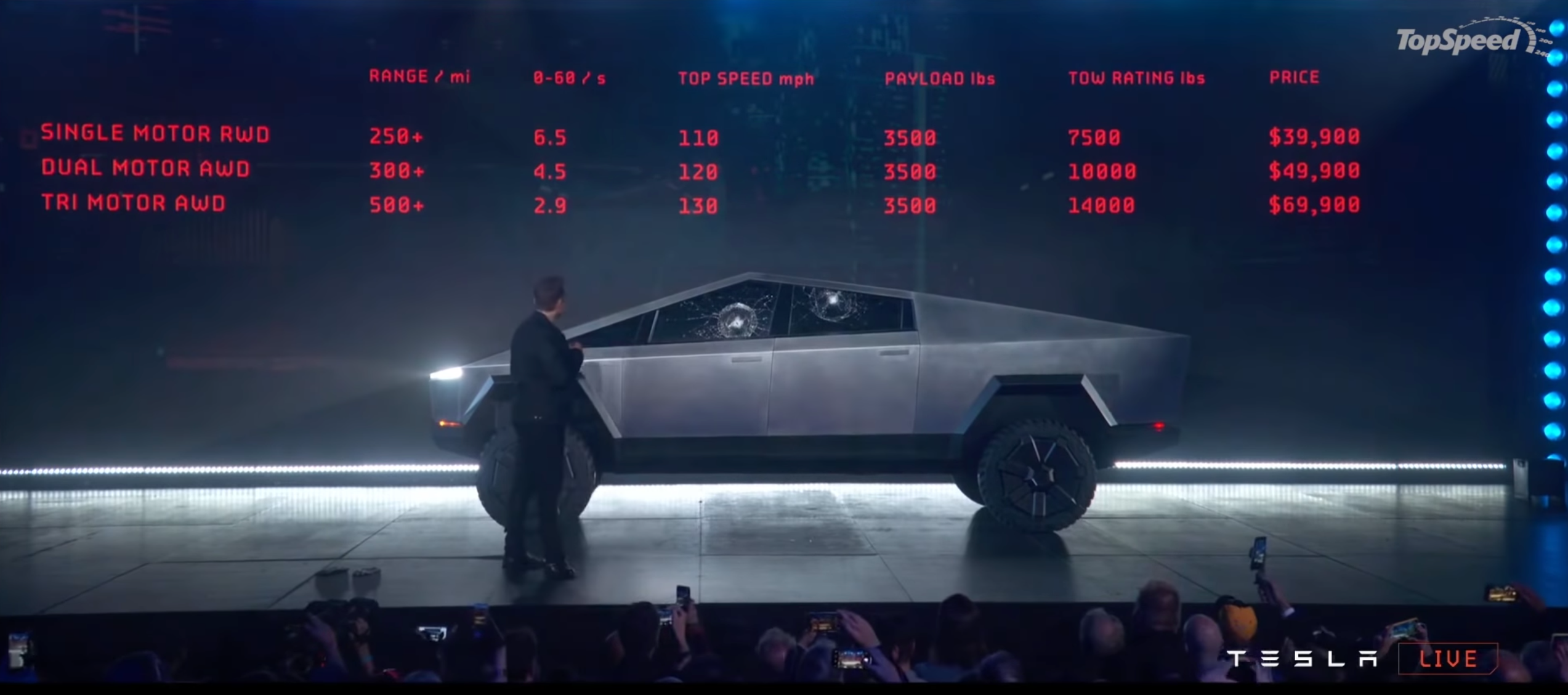The arrival of the Tesla Cybertruck has sent shockwaves throughout the auto industry. The all-new electric truck burst into the scene last night in Los Angeles and among the litany of important and breathtaking details that were revealed, none were as surprising as the truck’s price tag, or price tags depending on the trim that you get.
The Tesla Cybertruck’s price starts at $39,900 for the entry-level Single Motor RWD trim, and that’s not counting the incentives that come with it. Tesla is already taking pre-orders for the truck with just a downpayment of $100. Meanwhile, the Dual Motor AWD trim starts at $49,900 before incentives while the range-topping Tri Motor AWD trim starts at $69,900. A $7,000 option for the self-driving feature is also available.
There was a palpable mix of excitement, shock, and all-around bewilderment when the figures appeared on the massive screen during the launch of the Tesla Cybertruck.
I get it. The default reaction is to compare it to a lot of today’s popular pickups. The general inclination is to do that, in part because of the popularity of these models — the Ford F-150, Chevrolet Silverado, and Ram 1500 — and how their sales will be affected by the arrival of the Cybertruck.
But there are a lot of fundamental and philosophical differences between Tesla’s new electric truck and these trucks. Besides, even with the surprisingly affordable starting price of $39,900, the Cybertruck is still more expensive than the likes of F-150 ($28,495), Silverado 1500 ($28,300), and Ram 1500 ($32,145). Would customers be willing to pay the extra $7,000 to $10,000 for a truck that’s at least two years away when these existing models have proven themselves to be the best at what they do in a highly competitive segment?
The Rivian RT1 comes with a lot of impressive specs. It has a range of 300 to 400 miles depending on the size of the battery you choose. It has an impressive towing capacity of 11,000 pounds. It has up to 14.1 inches of ground clearance. It even has innovative cargo solutions, including a quirky central tunnel that a lot of people should have fun with.
But the Rivian R1T is expensive with a starting price of $69,000. That’s just $900 cheaper than the starting price of the range-topping Tesla Cybertruck Tri Motor AWD trim. Worse for Rivian was the announcement that the Cybertruck has the R1T beat in a lot of the important features of a pickup truck. The Cybertruck Tri Motor AWD was pegged to have a range of over 500 miles, a staggering figure in any set of circumstances. It also has a maximum towing capacity of 14,000 pounds, which is right in the territory of high-spec versions of today’s best trucks. The Cybertruck also has a longer bed — 6.5 feet — compared to the R1T’s 4.7-feet bed. The Cybertruck even has one extra seat — in the front, no less — compared to the five-seater capacity of the R1T.
It’s been reported that the Cybertruck will be powered by a pair of Raven permanent-magnet motors, on mounted on each axle, producing an estimated 690 horsepower and 824 pound-feet of torque. Tesla hasn’t confirmed the power figures, but it fits into our own estimates. Compare that to the R1T’s powertrain setup — a 135-kWh battery pack with four separate motors on each wheel — and its corresponding output of 750 horsepower and 829 pound-feet of torque, and the numbers aren’t that far from each other. Mind you, the Cybertruck’s output could still be higher. Tesla has a way of playing these figures close to its chest.
Unfortunately, the Bollinger B2 looks to be in worse shape than the Rivian R1T. Never mind that this electric truck has no aesthetic appeal. It’s not as powerful as either of its two rivals — it only has two electric motors that combine to produce 614 horsepower and 688 pound-feet of torque — and it can only tow up to 7,500 pounds. Its 120-kWh battery also has a range of just 200 miles, and worst of all, it has a starting price of $125,000, almost double the price of the Cybertruck Tri Motor AWD.
If there’s anything we learned from the Tesla Cybertruck’s unveiling last night, it’s that Tesla might have priced its two upstart rivals out before they could even get off the ground.

